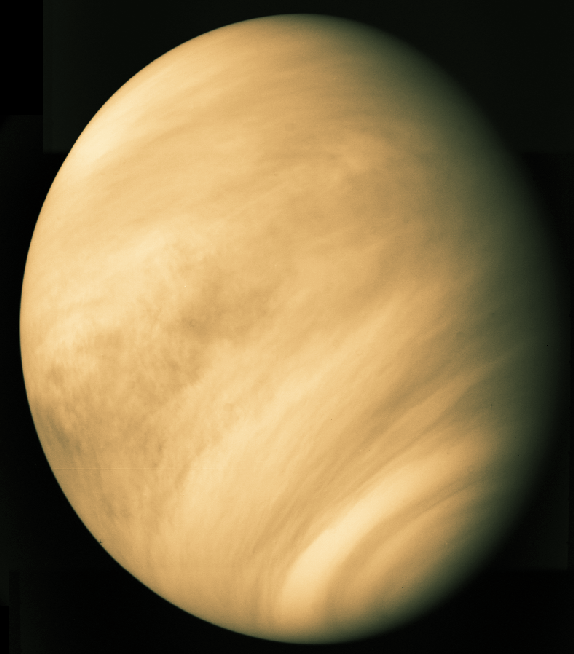

Venus is covered with a thick cloud layer which makes its surface impossible to see in visible light. As a result, it has been quite difficult to form conclusions about the processes and forces which have shaped Venus's surface. Because of Venus's similarity to the Earth, however, it was expected that the processes which shaped Venus's surface should be similar to the processes which shaped the Earth's surface. There are, however, some things which are different and expected to play roles in the evolution of Venus's surface.
Magellan
Beginning in 1990 and continuing on until 1993, the Magellan spacecraft mapped the surface of Venus using a technique known as radar ranging. To get around the problem of the dense cloud layer, Magellan viewed the surface using microwave radiation. Microwave radiation is a type of light, it simply has a longer wavelength than does visible light. Microwave radiation is able to penetrate the cloud layer of Venus.
Magellan was in a polar orbit about Venus and let the planet turn underneath it. As Magellan swooped over the surface of Venus, it shone a beam of radiation onto the surface of the planet. The process of mapping the planet is quite simple. The craft simply measured the amount of time it took for the radiation to go to Venus and return to the craft. Then knowing that the radiation traveled at the speed of light, it was easy to figure out far the ground was from the craft at any given time. This allowed Magellan to map the changes in elevation (the ground) on Venus. In this manner, Magellan mapped the surface of Venus with a horizontal resolution of 100 - 300 meters and a vertical resolution of 80 meters. Magellan also measured how intense the returning radiation was. The reflectivity of the surface of Venus depends upon the composition of the surface material and how rough is the surface.
Venusian Topography and Volcanism

The surface of Venus has three types of terrain:
It is clear that there are many volcanoes on Venus (indicating active geology in the past). However, Magellan saw no definitive evidence of current volcanism (as had been hoped). However, other indirect evidence suggests that volcanism may be still be ongoing:
Unfortunately, Magellan did not see a volcano in the act of erupting, so the issue is not settled. Magellan did see signs of recent volcanism, however, e.g.:
Magellan also found widespread evidence of other types of geological activity; deformations indicating large internal stresse, e.g.,
{So, as for Mars, the conclusion is that there is no definitive evidence for plate tectonic activity but there is ample evidence for an active geology on Venus.